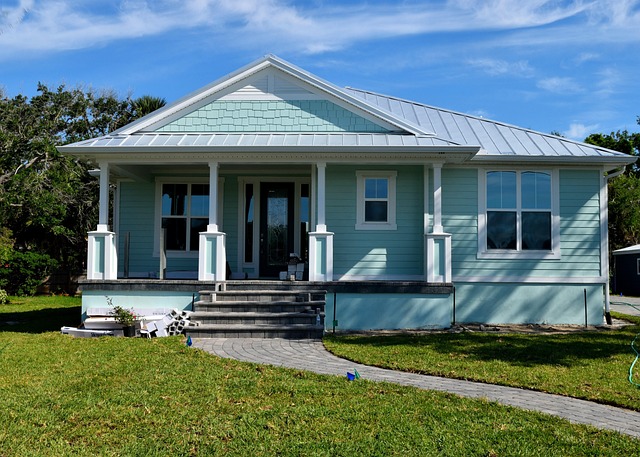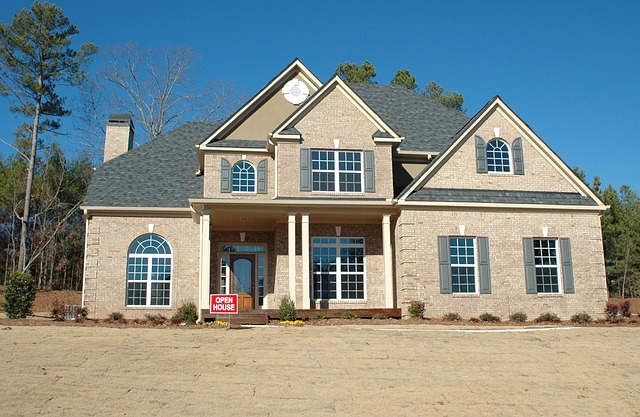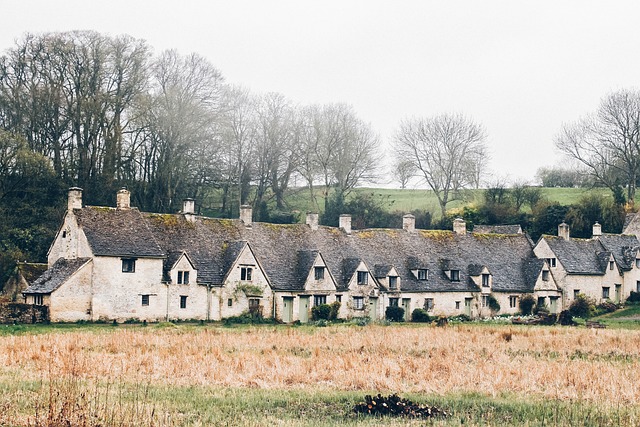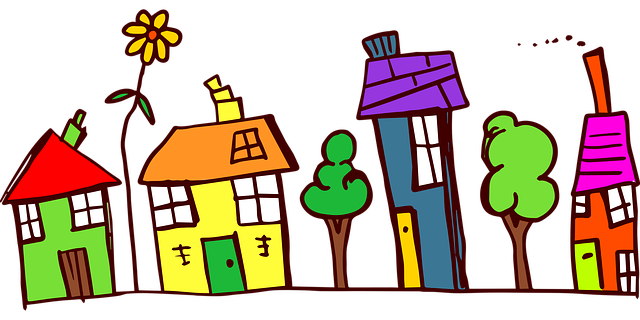Reimagining urban spaces is crucial for Sacramento's historically overlooked neighborhoods facing crime and economic deprivation. By transforming run-down areas into communal gardens or abandoned buildings into arts hubs, these communities can attract investors and residents, driving economic revival. Selling houses in these neighborhoods isn't just about real estate; it's about empowering communities, breaking negative cycles, attracting diverse populations, and building sustainable urban ecosystems. Strategic collaboration between residents, governments, and developers is key to ensuring a bright, inclusive future for all Sacramentans, with community engagement and sustainable design principles playing vital roles in this transformation.
Reimagining urban living spaces is not just a trend, but a necessity for cities like Sacramento. As the city evolves, understanding the potential of revitalized neighborhoods is key to attracting investment and fostering community growth. This article explores why reimagining urban areas matters, delving into Sacramento’s unique context, the power of community engagement, sustainable design principles, financial considerations, and successful transformations—all essential steps to elevate neighborhoods and sell houses in previously overlooked bad neighborhoods Sacramento.
- Understanding the Potential: Why Reimagining Urban Spaces Matters
- The Sacramento Context: Challenges and Opportunities in a Changing City
- Community Engagement: Collaborating for Transformative Change
- Sustainable Design Principles for Revitalized Neighborhoods
- Financial Considerations: Making the Case for Investment
- Success Stories: Real-Life Examples of Reimagined Urban Living
Understanding the Potential: Why Reimagining Urban Spaces Matters

Reimagining urban living spaces is a crucial step towards fostering vibrant communities, especially in areas that have been historically overlooked or deemed problematic. Many cities, including Sacramento, are home to neighborhoods that may face challenges like high crime rates or economic deprivation. However, these issues do not define the potential of these locations; they merely present unique opportunities for growth and transformation.
By taking a fresh perspective on such areas, we can unlock hidden possibilities. For instance, revitalizing run-down spaces into communal gardens or transforming abandoned buildings into arts hubs can attract investors and residents alike, leading to economic revival. Selling houses in bad neighborhoods Sacramento is not just about real estate; it’s about empowering communities and creating desirable living environments. This process has the potential to break negative cycles, attract diverse populations, and build sustainable urban ecosystems.
The Sacramento Context: Challenges and Opportunities in a Changing City

Sacramento, like many cities across the globe, is undergoing a period of significant transformation. This changing urban landscape presents both challenges and opportunities for residents and developers alike. One notable aspect is the influx of folks seeking to sell house in bad neighborhoods Sacramento has historically known. While these areas may have faced challenges with high crime rates, declining property values, and limited amenities, they also offer a unique chance to reshape and revitalize communities.
The city’s response has been multifaceted, ranging from urban renewal initiatives aimed at revamping infrastructure and public spaces to targeted programs designed to attract investment and new businesses. As Sacramento navigates these changes, the prospect of selling house in bad neighborhoods becomes both a complex task and an exciting opportunity. It requires strategic planning and collaboration between residents, local governments, and developers to ensure that the city’s transformation benefits all its citizens, fostering a vibrant and inclusive urban environment for years to come.
Community Engagement: Collaborating for Transformative Change

In the process of reimagining urban living spaces, community engagement is a powerful driver for transformative change. When residents come together, they can identify unique needs and aspirations for their areas. This collective effort fosters a sense of ownership and shared responsibility for enhancing the neighborhood. By actively involving local folks in the decision-making process, projects can be tailored to address specific challenges, such as revitalizing public spaces or improving infrastructure, making them more appealing to current residents and potential newcomers looking to buy houses in previously underserved neighborhoods like Sacramento.
Community collaboration also helps build social cohesion and strengthens the fabric of urban communities. When residents work together, they cultivate a sense of belonging and mutual support, which can lead to increased safety, improved property values, and a thriving local economy. For example, initiatives like community gardens or shared public art installations not only beautify the area but also encourage interaction among neighbors, ultimately enhancing the quality of life for everyone involved, including those considering selling house in bad neighborhood Sacramento who are drawn to revitalized communities.
Sustainable Design Principles for Revitalized Neighborhoods

Reimagining urban living spaces involves embracing sustainable design principles to revitalize neighborhoods, especially those like Sacramento areas where property values have historically been lower. By integrating green infrastructure and renewable energy sources, communities can create vibrant, resilient hubs that attract residents and investors alike. This transformation not only enhances the quality of life for existing neighbors but also prepares these areas for future challenges, such as climate change and urban growth pressures.
For instance, implementing sustainable design in sell house in bad neighborhood Sacramento contexts could involve revitalizing public spaces with native plant species that require less water, installing solar panels on rooftops to reduce carbon footprints, and promoting walkability through strategic land use planning. These initiatives not only foster a healthier environment but also contribute to the economic rejuvenation of these neighborhoods, making them desirable places to live, work, and play.
Financial Considerations: Making the Case for Investment

Reimagining urban living spaces requires a deep dive into financial considerations, especially when addressing areas that have historically been overlooked, like certain neighborhoods in Sacramento. The narrative around selling a house in a bad neighborhood Sacramento often focuses on challenges—high vacancy rates, reduced property values, and safety concerns. However, this perspective overlooks the immense potential for growth and transformation. Investors who recognize these areas as emerging hotspots stand to make substantial returns; revitalized urban centers attract new businesses, amenities, and residents, driving up demand and property values.
By investing in these neighborhoods, Sacramento can foster a positive cycle of change. Property flippers and developers play a pivotal role in this metamorphosis by purchasing distressed properties at discounted rates, renovating them to modern standards, and either selling them at a profit or renting them out to new, diverse residents. This not only boosts the local economy but also contributes to a more inclusive urban landscape, where once-neglected areas become vibrant hubs of activity.
Success Stories: Real-Life Examples of Reimagined Urban Living

In cities like Sacramento, where some neighborhoods struggle with challenges such as higher crime rates and lower property values, it might seem daunting to envision a brighter future. However, successful examples across the globe demonstrate that reimagining urban living spaces can lead to vibrant, thriving communities. One notable example is the transformation of Detroit’s blighted areas into bustling hubs of culture and innovation through community-driven initiatives and public-private partnerships.
Similarly, Sacramento has seen inspiring transformations in certain areas where residents have taken initiative to revitalize their surroundings. For instance, communities in formerly neglected parts of the city have organized clean-up drives, street art projects, and local farmers’ markets, attracting new businesses and investment. The successful transition of these neighborhoods highlights the potential of community engagement and creative urban planning in reversing the cycle of decline, even in areas often considered challenging like sell house in bad neighborhood sacramento.
Reimagining urban living spaces is not just a trend, but a necessary evolution to meet the needs of modern communities. As seen in the Sacramento context, challenging areas can be transformed into vibrant neighborhoods through collaborative community engagement and sustainable design principles. By embracing innovative ideas and securing financial investments, cities like Sacramento can revitalize areas, improve quality of life, and even attract buyers looking to sell houses in previously neglected neighborhoods. The success stories highlighted here demonstrate that with the right approach, urban spaces can be reimagined for a brighter future.
